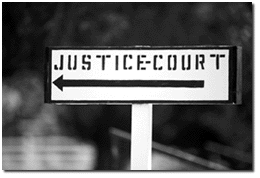|
Conclusion
 Because of multiple factors that are unique to each State, OJJDP does not specify a process or strategy that States must use to address DMC. Instead, OJJDP outlines the phases that the States need to move through to address the DMC core requirement and offers sample intervention strategies for State consideration.12 However, the principles that emerge from the Pennsylvania process, such as stable leadership by the JAC subcommittee, data-based and systematic strategies, broad community involvement and coalition building, significant financial commitment from the advisory committee, strong support from the State's top officials, and investment in evaluation that, in turn, is used to strengthen prevention and intervention projects in a continuing and ongoing manner, are applicable to all settings. States' efforts to reduce DMC are likely to be greatly facilitated if they can be guided by these principles. OJJDP resources will continue to be available to provide technical assistance to State and local governments working to address DMC. Because of multiple factors that are unique to each State, OJJDP does not specify a process or strategy that States must use to address DMC. Instead, OJJDP outlines the phases that the States need to move through to address the DMC core requirement and offers sample intervention strategies for State consideration.12 However, the principles that emerge from the Pennsylvania process, such as stable leadership by the JAC subcommittee, data-based and systematic strategies, broad community involvement and coalition building, significant financial commitment from the advisory committee, strong support from the State's top officials, and investment in evaluation that, in turn, is used to strengthen prevention and intervention projects in a continuing and ongoing manner, are applicable to all settings. States' efforts to reduce DMC are likely to be greatly facilitated if they can be guided by these principles. OJJDP resources will continue to be available to provide technical assistance to State and local governments working to address DMC.
For example, Pennsylvania's intervention strategies are primarily programmatic in nature. Future DMC national updates may feature different intervention strategies employed by other States, such as legislative, administrative, or policy changes in juvenile justice system processing.
 |
| Disproportionate Minority Confinement:
1997 Update |
Juvenile Justice Bulletin
· September 1998 |
|